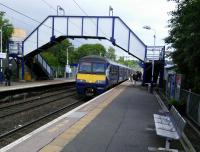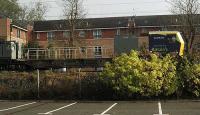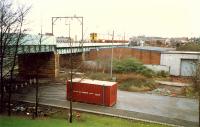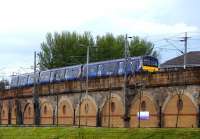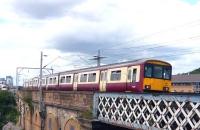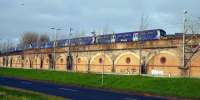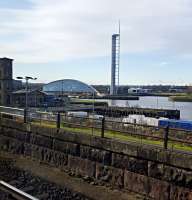Stobcross Railway
Introduction
This railway is mostly open. Today it carries the commuter trains through Partick station. The line was originally conceived to provide rail access (for goods) to the new Queens Dock and the expanding west end of Glasgow. After completion of the Glasgow City and District Railway by the North British Railway the line came into use by commuters. Now with the withdrawal of nearly all freight operations from the area the lines are now electrified with services running to Helensburgh, Balloch, Dumbarton, Dalmuir, Clydebank, Singer and Milngavie. The Queens Dock is now the Scottish Exhibition Centre and the Kelvinhaugh, Stobcross and Partickhill goods yards have been closed. The Anniesland to Maryhill curve was re-instated.
Dates
| / /1840 | Clyde Trustees Buy land at Stobcross. This was to later become the Queens Dock and would be served by the Stobcross Railway from 1874. |
| / /1860 | Clyde Trustees Decide to build a wet dock (the Queens Dock) on their land at Stobcross. The North British Railway promotes the Stobcross Railway as a branch of the Glasgow, Dumbarton and Helensburgh Railway to serve it. (1860s). |
| / /1864 | Stobcross Railway Authorised with running powers for the Caledonian Railway to Caledonian Joint Station. In exchange, the Caledonian Railway abandons its Bill for a line to Stobcross and Whiteinch. |
| / /1864 | Skaterig Branch (North British Railway) Authorised, a branch of the Stobcross Railway. |
| / /1867 | Stobcross Railway Deviations of line authorised, portions authorised in 1864 Act abandoned. |
| / /1870 | Stobcross Railway Act passed. To be worked by the Edinburgh and Glasgow Railway with running powers for the Caledonian Railway. The two companies to have separate goods stations. A 30 chain diversion of the Forth and Clyde Canal was required. The line curved round the west of Glasgow after opposition for a more direct route, particularly of James Fleming of Kelvinside Estate. |
| / /1870 | Stobcross Railway Deviations authorised. |
| / /1871 | Stobcross Railway Deviations authorised and previously authorised alignment abandoned. |
| / /1871 | Stobcross Railway Greenlee Pit branch authorised. |
| / /1872 | Stobcross Railway Dawsholm Gas Works opened alongside the Stobcross Railway which is under construction. |
| / /1873 | Stobcross Railway Cowdenhill Branch (North British Railway) authorised. Caledonian Railway given running powers. |
| / /1873 | Stobcross Railway Deviation authorised. |
| 01/10/1874 | Stobcross Railway Caledonian Railway portions opened. |
| 20/10/1874 | Stobcross Railway Line opened by the North British Railway. The Caledonian Railway obtained permission for running powers to Stobcross and for goods yards at Partickhill Goods [CR] and Stobcross. The Caledonian managed to gain join ownership of the Stobcross high level to Stobcross low level connecting line. |
| 29/10/1874 | Whiteinch Railway
Whiteinch Tramway Opened as a branch from the Stobcross Railway from an east facing Whiteinch Junction. Railway operated by North British Railway and tramway by the Wood brothers. |
| / /1875 | Stobcross Railway Cowdenhill Branch (North British Railway) opened to Knightswood pits and brickworks, later extended to the Cowdenhill stone quarries. |
| / /1876 | Stobcross Railway Caledonian Railway authorises building land in Partick for Partickhill Goods [CR]. |
| / /1881 | Stobcross Railway Partick Siding authorised for the Caledonian Railway's Partickhill Goods [CR]and running powers over theStobcross Railway to the goods yard. |
| 01/12/1882 | Glasgow, Yoker and Clydebank Railway Opened from Yoker Junction, Hyndland, to Clydebank [1st] (later Clydebank East). This line was used in conjunction with a ferry over the Clyde and the Stobcross Railway station at Partick for shipyard workers who lived in Govan to travel to the Clyde Bank Iron Shipyard [2nd] which had re-located from Govan. A line ran west from Clydebank [1st] into the shipyard over the Forth and Cart Canal. With the opening of the railway the Forth and Cart lost most of its business. |
| / /1884 | Stobcross Railway Extension authorised. Running powers granted to Caledonian Railway. |
| 01/02/1887 | Glasgow City and District Railway Glasgow and Coatbridge Branch (North British Railway) City of Glasgow Union Railway Edinburgh and Glasgow Railway Glasgow, Dumbarton and Helensburgh RailwayStobcross Railway Circular service introduced by the North British Railway. |
| 01/01/1897 | Whiteinch Railway Opened to passengers. A new connection was made to the line from the west of Crow Road. This replaced an earlier line which crossed under Crow road and joined at Whiteinch Junction which was further east (to the south of Gartnavel Royal Hospital). The route of this earlier line is now built over, but was slightly further south than the existing line. The North British Railway also built a spur from a west facing junction on the Glasgow, Yoker and Clydebank Railway to a north facing junction on the Stobcross Railway. |
| 12/01/1903 | Glasgow City and District Railway Glasgow and Coatbridge Branch (North British Railway) City of Glasgow Union Railway Edinburgh and Glasgow Railway Glasgow, Dumbarton and Helensburgh RailwayStobcross Railway Circular service withdrawn. |
| 09/01/1931 | Stobcross Railway Great Western Road station renamed Anniesland. |
| 15/07/1968 | Stobcross Railway Kelvinhaugh Junction to Queens Dock closed. |
| /10/1980 | Glasgow, Dumbarton and Helensburgh Railway Maryhill signal box burnt down, line to Anniesland closed. New brick box built on other side of track, but never used. The Maryhill to Anniesland section of the Stobcross Railway falls out of use. |
| / /1983 | Glasgow, Dumbarton and Helensburgh Railway
Stobcross Railway Maryhill Park signal box burns down, line from Maryhill Park Junction [1st] to Knightswood South Junction (Anniesland) out of use. Trains from Rothesay Dock to BSC Ravenscraig Steelworks (imported coal) and stock movements unable to run. Fort William sleeper diverted to run through Singer. |
| / /1986 | Stobcross Railway
Glasgow Central Railway Finnieston [2nd] renamed Exhibition Centre. |
| / /1988 | Glasgow, Dumbarton and Helensburgh Railway Stobcross Railway Maryhill Park Junction to Knightswood South Junction (Anniesland) intentionally omited from Yoker Resignalling Scheme. |
| / /1997 | Stobcross Railway Partickhill station and Partickhill Goods [NBR] goods shed demolished to make may for a supermarket and other stores. The yard here was used during the Yoker re-signalling scheme. |
| /09/2005 | Stobcross Railway Re-opening of 1.6km of line between Maryhill Park Junction and Anniesland with a new Kelvindale station. |
| 24/09/2005 | Stobcross Railway Official opening of Kelvindale by Strathclyde Passenger Transport Chairman Alistair Watson. |
| 26/09/2005 | Stobcross Railway Kelvindale station open to public. |
Portions of line and locations
This line is divided into a number of portions.
Maryhill to Kelvinhaugh Junction
This is a two platform station in the north of Maryhill. The current station is a reopening of 1993 on the site of the earlier station. Maryhill Park Junction opened to the west in 2005 along with a single track line to a bay platform at Anniesland.
...
See also
Glasgow, Dumbarton and Helensburgh Railway

David Panton 21/07/2018
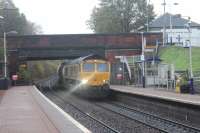
...
Alastair McLellan 31/10/2017

...
Alastair McLellan 30/10/2017
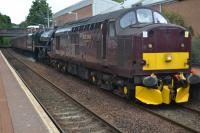
Iain Teaz 13/07/2020
This junction was immediately west of Maryhill Park station and east of the Maryhill Viaduct [GDH]. It was formed with the opening of the Stobcross Railway in 1874, a branch from the 1858 Glasgow, Dumbarton and Helensburgh Railway serving the west of Glasgow, Partick and the Queens Dock.
...
See also
Glasgow, Dumbarton and Helensburgh Railway
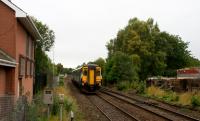
Colin McDonald 23/09/2015
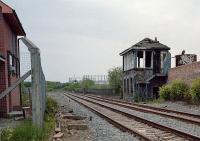
Ewan Crawford 29/05/1987
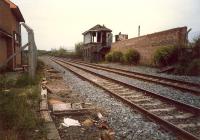
Ewan Crawford //1987
This is a double track seven arch viaduct over the River Kelvin built for the Stobcross Railway. It is immediately south of, and adjoins, the Maryhill Viaduct [GDH] of the Glasgow, Dumbarton and Helensburgh Railway, the junction between the two lines originally being at the east end (Maryhill Park Junction [1st]).
...
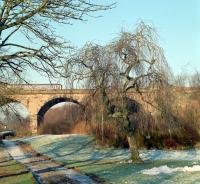
Ewan Crawford 15/01/1991
This yard was west of Maryhill Park Junction [1st] and the Maryhill Viaduct [GDH] and Maryhill Viaduct [SR] viaducts. It was a large yard in the 'V' of the junction between the 1858 Glasgow, Dumbarton and Helensburgh Railway and the 1874 Stobcross Railway branch.
...
This signal box was east of Dalsholm Road, an overline bridge which crosses the Stobcross Railway. The box controlled access to Dawsholm Gas Works, which was on the south side of the line and approached from the west.
...
This is a single platform station. It is built on the former westbound line of the curve between Maryhill Park Junction and Knightswood South Junction.
...
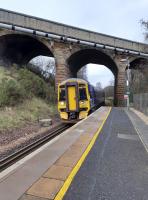
Malcolm Chattwood 23/02/2023

David Panton 17/06/2017
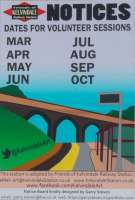
Ewan Crawford 07/04/2017
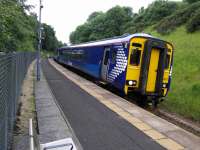
David Panton 17/06/2017
In 2016 the long siding from Maryhill Park Junction to a bay platform at Anniesland became a through route when a new connection was put in between the original Knightswood South Junction, north of Anniesland station, and a new Dawsholm Junction on the Anniesland - Maryhill siding.
...
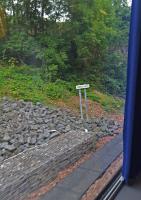
John Yellowlees 04/08/2016
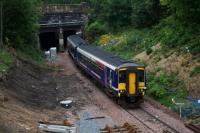
Colin McDonald 23/09/2015
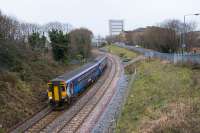
Ewan Crawford 09/12/2016
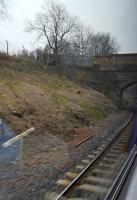
John Yellowlees 23/03/2016
This gas works was opened by the Partick, Hillhead and Maryhill Gas Company. Glasgow Corporation bought the works in 1891, naming it Gasworks No 4. Also known as Anniesland Gas Works.
...
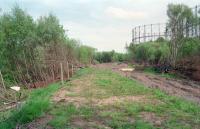
Ewan Crawford //1999

Ewan Crawford //1999
This junction is to the north of Anniesland station. To the east the original line, the Stobcross Railway of 1874 runs to Maryhill Park Junction, just west of Maryhill. This closed in 1980 and reopened in 2005.
...
See also
Glasgow City and District Railway
Cowdenhill Branch (North British Railway)
Skaterigg Branch (North British Railway)
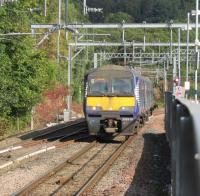
David Panton 19/09/2020

Robin McGregor 21/09/1963
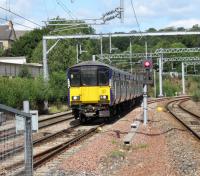
David Panton 25/08/2018
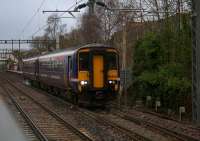
Colin McDonald 28/01/2016
This is a three platform station on an elevated site. There are two through platforms and a bay platform at the north end of the southbound (city bound) platform for trains to Glasgow Queen Street High Level via Maryhill. The station is just east of Anniesland Cross.
...
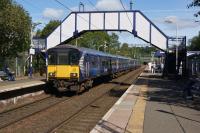
John McIntyre 07/09/2019

...
Network Rail /07/2023
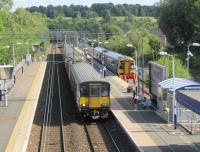
David Panton 04/08/2021
This is a junction between the Anniesland to Hyndland alignment of the 1874 Stobcross Railway and a 1897 curve which runs from north to west to meet the Glasgow, Yoker and Clydebank Railway of 1882. The curve is single track (formerly double) and other lines double. The curve crosses Crow Road. The junction is the northern apex of a triangular junction formed with [[Hyndland West ...
More detailsSee also
Clydebank to Dalmuir (North British Railway)
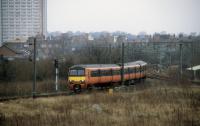
Roger Geach Collection /03/1996
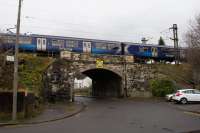
Ewan Crawford 09/12/2016
This is the junction between the lines to Anniesland and Jordanhill west of Hyndland. The former is the older line, the 1874 Stobcross Railway and the latter is the Glasgow, Yoker and Clydebank Railway of 1882. Both lines are double track.
...
See also
Glasgow, Yoker and Clydebank Railway
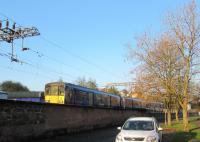
David Panton 17/11/2018
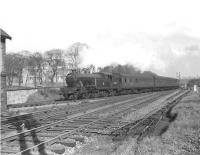
G H Robin collection by courtesy of the Mitchell Library, Glasgow 17/04/1957
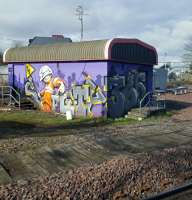
John Yellowlees 08/04/2016
Junction between the Stobcross Railway and the Whiteinch Railway. The junction was just west of today's Hyndland station. The Whiteinch line was single track. Approach to it from the Stobcross line was from the east. It followed a different route west, passing under Crow Road to the south of the later Jordanhill station alignment. The first part of this can be seen on the left on a ...
More detailsSee also
Whiteinch Railway
Not to be confused with Hyndland Depot, Hyndland [1st],Partickhill Goods [NBR] and Partickhill Goods [CR].
...
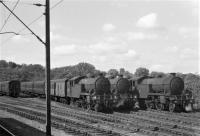
Robin McGregor //1961
This is an island platform station which was opened in 1960 during the electrification of the North Clyde lines.
...
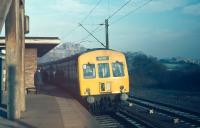
Brian Haslehust //1970
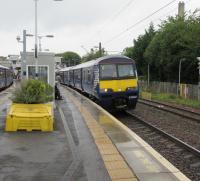
David Panton 08/09/2018
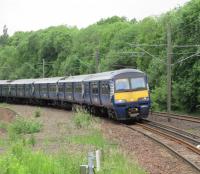
David Panton 23/06/2021

David Panton 23/06/2021
This panel box was located south of Hyndland station (opened 1960) on the west side of the line, with the reversing spur for the caley yard on its west side. The bridges over Clarence Drive are to the south of the site.
...
Opened with the Hyndland [1st] branch of the Glasgow City and District Railway.
...
See also
Glasgow City and District Railway
This goods yard was operated by the Caledonian Railway although located on the Stobcross Railway, a North British Railway owned line. The Caledonian had running powers to the yard via Maryhill, Cowlairs and Sighthill.
...
See also
Lanarkshire and Dumbartonshire Railway
This goods yard was operated by the North British Railway. It was located just north of Partickhill station on the west side of the line. Access was from the north. The yard no longer exists but the cut back approach to it remains in place as a permanent way sidings. The yard is now the West End Retail Park.
...
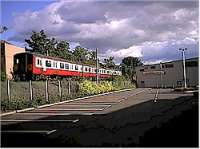
Ewan Crawford //
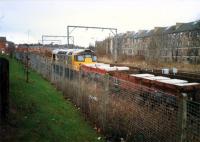
Ewan Crawford //1987

Rod Crawford 09/04/2016
This was an elevated two platform station on the north side of Dumbarton Road. The station was replaced by Partick station in 1979, just across Dumbarton Road on its south side.
...
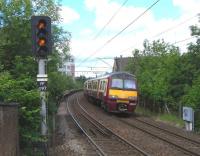
David Panton 16/06/2010
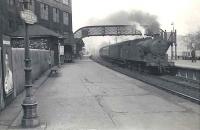
G H Robin collection by courtesy of the Mitchell Library, Glasgow 28/03/1957
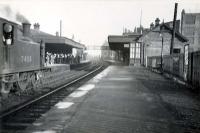
G H Robin collection by courtesy of the Mitchell Library, Glasgow 05/06/1948
This is a modern two platform station which replaced Partickhill just to the north west.
...
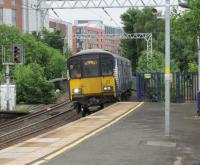
David Panton 23/06/2021
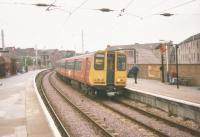
David Panton 27/09/1997

John Furnevel 23/09/2007
This double track girder viaduct crosses the River Kelvin close to its confluence with the River Clyde. It previously carried a footbridge on its south side. It was built a little way up the Kelvin leaving space for Meadowside Shipbuilding Yard and graving dock (predating the railway) on the west bank and Pointhouse Shipbuilding Yard on the east bank.
...
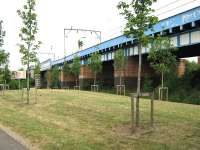
Alistair MacKenzie 23/06/2010
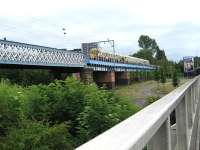
Alistair MacKenzie 23/06/2010
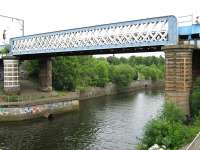
Alistair MacKenzie 23/06/2010
This was a two platform station. It was located at what is now Finnieston West Junction. The station was elevated on the east side of Ferry Road with the platform building above the slopping embankments. The line remains open today.
...
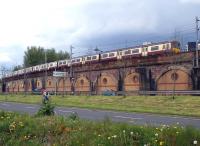
Colin Miller 23/04/2014
This yard was on the north east side of the Stobcross Railway and Yorkhill station. It was a small marshalling yard of coal sidings to the west of Kelvinhaugh Junction. From this yard was access to Kelvinhaugh Refuse Despatch Works.
...
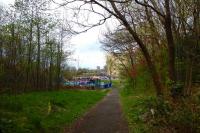
Colin Miller 23/04/2014

Colin Miller 23/04/2014
This is a junction between the low level Glasgow Queen Street and the low level Glasgow Central line. It was formed in 1979 on the opening of the Argyle Line. It forms part of a flying junction.
...

Ewan Crawford //1988
This works was rail served. Access was by reversal from Yorkhill Yard. It was on the north side of the Stobcross Railway. The site had an immense chimney stalk which was a landmark.
...
This shipyard was on the east bank of the River Kelvin close to its confluence with the River Clyde. It was south of the Kelvin Viaduct of the Stobcross Railway.
...
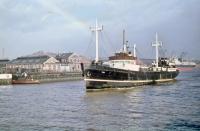
A Snapper (Courtesy Bruce McCartney) //

Ewan Crawford //1991
This was the junction between the lines to, from north to south, Kelvinhaugh Goods, Glasgow Queen Street Low Level and Stobcross Goods [NBR] (both northern and southern portions), and the line dropping down to Stobcross Goods Low Level (which served the Queens Dock.
...

Bill Roberton 25/02/2023
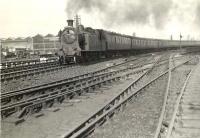
G H Robin collection by courtesy of the Mitchell Library, Glasgow 28/05/1957
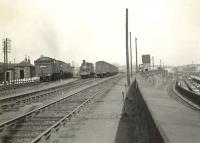
G H Robin collection by courtesy of the Mitchell Library, Glasgow 28/05/1957

G H Robin collection by courtesy of the Mitchell Library, Glasgow 28/05/1957
Queens Dock branch
This was the junction between the lines to, from north to south, Kelvinhaugh Goods, Glasgow Queen Street Low Level and Stobcross Goods [NBR] (both northern and southern portions), and the line dropping down to Stobcross Goods Low Level (which served the Queens Dock.
...

Bill Roberton 25/02/2023

G H Robin collection by courtesy of the Mitchell Library, Glasgow 28/05/1957

G H Robin collection by courtesy of the Mitchell Library, Glasgow 28/05/1957

G H Robin collection by courtesy of the Mitchell Library, Glasgow 28/05/1957
This is a junction between the low level Glasgow Queen Street and the low level Glasgow Central line. It was formed in 1979 on the opening of the Argyle Line. It forms part of a flying junction. It more or less equates to the location of the earlier Kelvinhaugh Junction.
...

Colin McDonald 09/06/2015
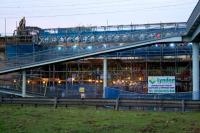
Colin McDonald 07/11/2015
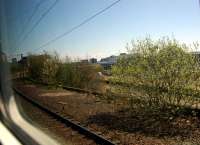
Ewan Crawford 05/05/2006
There was a yard at the east end of the Stobcross Railway's 1874 goods lines dropping down from Finnieston East Junction to the Queens Dock. The site of this yard is close to today's Exhibition Centre, just to its west. The ramp now carries westbound trains to Partick from Exhibition Centre.
...
This goods depot was located next to the Queens Dock on the north side of Pointhouse Road. By reversal a set of holding sidings could be reached to the west. Sidings serving the quaysides were south of the road.
...
See also
Glasgow Central Railway

Ewan Crawford //1988

G H Robin collection by courtesy of the Mitchell Library, Glasgow 09/09/1958
This was a large dock to the west of central Glasgow on the north bank of the River Clyde. It was served by the Stobcross Railway. The dock was infilled and is now the site of the Scottish Exhibition Centre.
...
See also
Queens Dock Railway Lines
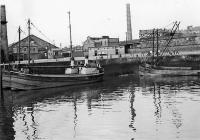
G W Robin 09/09/1958
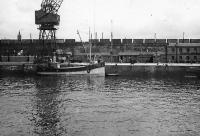
G W Robin //1955

Brian Haslehust //1968

Ewan Crawford //
This crane is a Glasgow landmark. It was built for the Clyde Navigation Trust. It was used for loading cargo, notably locomotives, onto ships at Stobcross Quay. It was also where marine engines from the Finnieston Diesel Engine Works were fitted to vessels built at Harland & Wolff's Govan Ship Yard [1st]. Engines from the nearby David Rowan and Co works were also fitted ...
More detailsSee also
Queens Dock Railway Lines
This quay was on the north bank of the River Clyde opposite Plantation Quay. At the east end of the quay is the Stobcross Crane used to load locomotives onto ships. (This was not the only quay used for this, locomotives were also exported through Plantation Quay on the opposite, south, bank of the Clyde.) Some dockside lines remain, disconnected from the network. The Queens Dock ...
More detailsSee also
Queens Dock Railway Lines

Alistair MacKenzie //2006

Ewan Crawford //1987

Ewan Crawford Collection //1952

Alistair MacKenzie //2006
This engine works was owned by Harland & Wolff of Belfast and the Govan Shipbuilding Yard. It was nicknamed 'The Diesel'.
...
See also
Queens Dock Railway Lines
Kelvinhaugh and Stobcross High Level
This was the junction between the lines to, from north to south, Kelvinhaugh Goods, Glasgow Queen Street Low Level and Stobcross Goods [NBR] (both northern and southern portions), and the line dropping down to Stobcross Goods Low Level (which served the Queens Dock.
...

Bill Roberton 25/02/2023

G H Robin collection by courtesy of the Mitchell Library, Glasgow 28/05/1957

G H Robin collection by courtesy of the Mitchell Library, Glasgow 28/05/1957

G H Robin collection by courtesy of the Mitchell Library, Glasgow 28/05/1957
This goods and minerals yard was on the north side of the Stobcross Railway. It was served from the west, from Kelvinhaugh Junction and incorporated Stobcross Shed on its southern margin, alongside the line east to Stobcross Junction, Stobcross Goods and Glasgow Queen Street Low Level.
...
This was a two road locomotive shed in the southern part of Kelvinhaugh Goods yard. It was approached from the west and was just north of Stobcross Junction.
...
This was the junction between the approach to the northern half of Stobcross Goods [NBR] (one of the terminii of the Stobcross Railway) and the line to Glasgow Queen Street Low Level (Glasgow City and District Railway).
...
See also
Glasgow City and District Railway
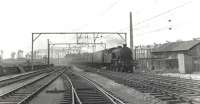
G H Robin collection by courtesy of the Mitchell Library, Glasgow 14/07/1961
This large goods yard was one of the termini, with Kelvinhaugh Goods located to the west, of the Stobcross Railway opened in 1874. The goods yard was located at a higher level than Stobcross Goods Low Level, immediately to the south and the Queens Dock beyond. The yard was accessed from the west, from Stobcross Junction and, due to its size, Kelvinhaugh Junction.
...
Books
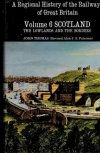 A Regional History of the Railways of Great Britain: Scotland - The Lowlands and the Borders v. 6 (Regional railway history series) | 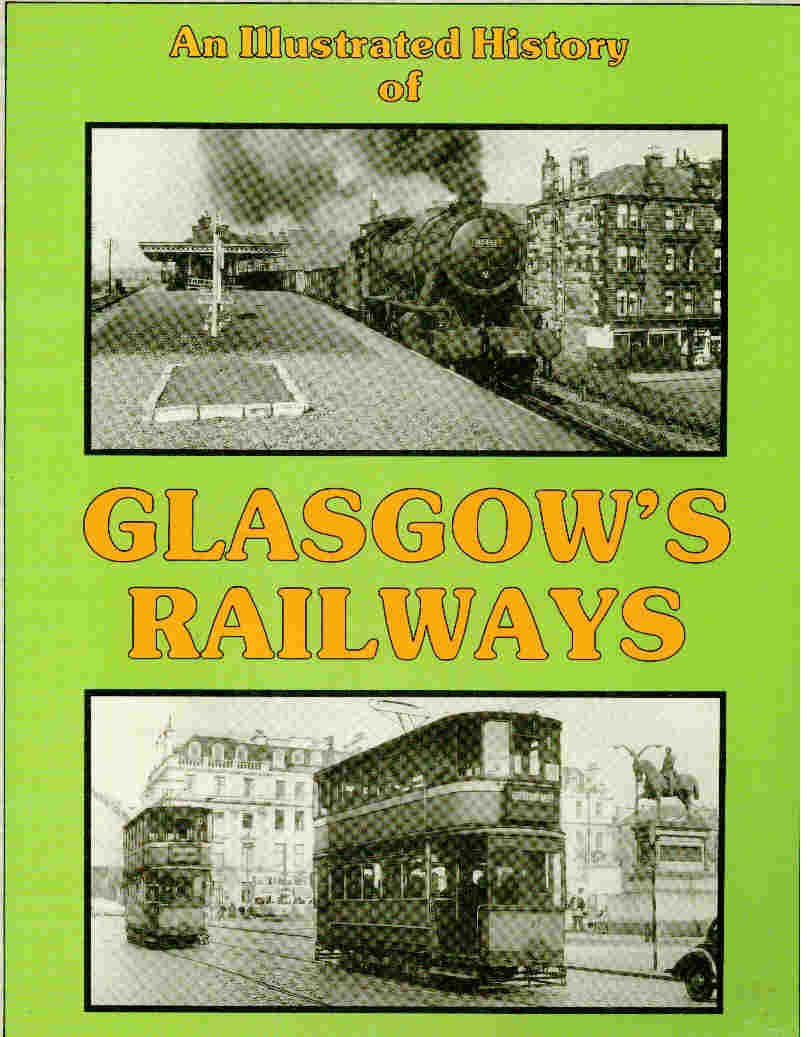 An Illustrated History of Glasgow's Railways |










